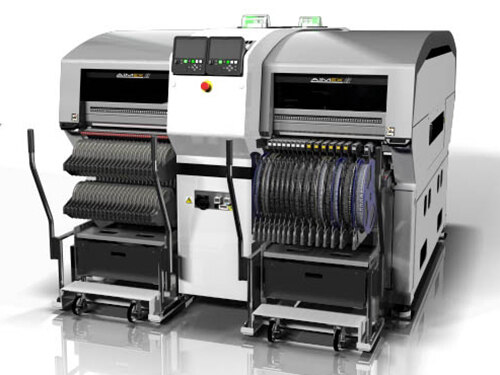Email format error
Email cannot be empty
Email already exists
6-20 characters(letters plus numbers only)
The password is inconsistent
Email format error
Email cannot be empty
Email does not exist
6-20 characters(letters plus numbers only)
The password is inconsistent


In electronics manufacturing, speed and accuracy are very important. One key machine used in this process is the Fuji pick and place machine. This machine is essential for placing electronic components on a printed circuit board (PCB). In this post, we will talk about how the Fuji pick and place machine works, its features, and why it is a popular choice for many companies.
A Fuji pick and place machine is an automated machine used in PCB production. It picks up small components from a tray or reel and places them on a PCB. This machine is important because it ensures that parts are placed correctly and quickly, reducing mistakes compared to manual placement.
The Fuji pick and place machine is known for its high accuracy. It can place different types of components, from small parts to larger ones. It is fast and efficient, making it ideal for large production runs where speed and accuracy are key.
Accuracy and Speed
Fuji machines are known for being precise. They can place parts with very little error. The machine works fast, so manufacturers can meet tight deadlines without lowering the quality.
Versatility
A machine can handle many types and sizes of components. Whether small chips or larger parts, Fuji machines can place them all. This makes them useful in many different industries like automotive, telecommunications, and consumer electronics.
Easy to Use
Even though Fuji machines are advanced, they are easy to operate. The user interface is simple, so both experienced operators and new workers can use the machine with little training. The software is also easy to adjust, which helps reduce downtime.
Cost-Effective
While Fuji machines may cost more at first, they are a good investment in the long run. The machine’s speed and accuracy lead to fewer errors and less rework, which lowers the overall cost of production.
Reliable
Fuji machines are known for being reliable. They require less maintenance and last longer, which reduces downtime and increases productivity.
The vision system in a Fuji pick and place machine is one of its main features. It uses cameras to check the components and PCB, making sure that every part is placed correctly. It can also find defects in the components or the PCB, which allows for quick fixes before continuing with the production.
The machine can handle a wide range of parts. It can pick components from different types of feeders like reels, trays, or tubes. This makes it flexible and useful for many types of products.
One of the key benefits is its speed. It can place thousands of parts every hour, improving the overall efficiency of the production process. This fast speed makes it ideal for large production runs.
Fuji’s software helps the pick and place machine work with other machines in the production line. The software can find the best way to place the components, reducing unnecessary movement and improving the overall process. The software also collects data to help improve production over time.
When comparing Fuji’s pick and place machines to other brands like Siemens, Panasonic, and Juki, Fuji stands out for its balance of speed, accuracy, and price. Let’s look at how Fuji compares to other brands:
Siemens machines are known for their technology but are usually more expensive than Fuji. Fuji offers a good price for the performance it provides, making it a better option for smaller businesses.
Panasonic also makes reliable pick and place machines, but Fuji is often more flexible. Fuji machines can handle a wider variety of components, which makes them better for different types of products.
Juki’s machines are generally cheaper than Fuji’s, but Fuji machines tend to be faster and more accurate, making them better for high-speed and high-precision tasks.

Some routine maintenance for a Fuji pick and place machine includes cleaning the feeders, lubricating moving parts, and checking the vision system. Software updates are also important to keep the machine running smoothly.
Fuji offers good support for its machines. Users can access manuals, technical support, and online resources. Fuji also offers training for operators, which helps avoid errors and keeps production running smoothly.